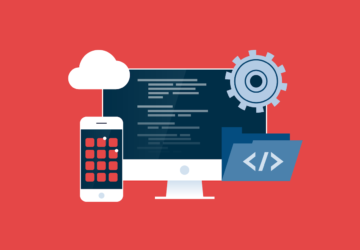IT operations are the backbone of any company. IT Ops manages everything from maintaining an online database, storing necessary data on the cloud, and managing hardware to overseeing employee performance.
IT Operations (ITOps) includes the employees, resources, and people who are directly associated with the company’s IT service management.
The primary purpose of ITOps is to offer high-quality IT services to clients at compelling prices.
IT Ops ensures that the company’s IT infrastructure is in good health and that all necessary hardware tools and software are up to date.
Key Responsibilities of an IT Operations Manager
Business Continuity: IT Ops headed by a senior-level manager makes sure that the organization continues to thrive while ensuring that the firm’s disaster recovery process is intact for unforeseen circumstances and situations. They ideate and execute necessary strategies to mitigate the impact of data loss or hardware damage if such a situation arises.
Backups and Data Safety: IT Ops also ensures necessary data backups and proper working of all necessary tools and servers so that the firm’s output and work efficiency stay at its top.
Managing IT Infrastructure: An IT operations manager is responsible for the optimum maintenance of hardware, gadgets, and software tool kits so that the company’s IT infrastructure works uninterruptedly, even in a remote work environment.
The manager also looks into the various aspects of network architecture, network design, and software updates. They work in sync with DevOps to make sure that the organization’s overall demand for necessary apps or websites is met as per the standard set by the organization.
However, in a remote working environment, the task of an IT operations manager becomes even more challenging.
Here are some key challenges that they encounter day in and day out, along with their solutions!
Team Collaboration
In remote working conditions, a face-to-face meeting is impossible. Therefore, it makes the possibility of team collaboration more challenging. But you shouldn’t forget that plenty of tools are now available, making it easier for managers to communicate with their team members. Therefore, the organization needs to make use of various collaboration tools like Zoom, Microsoft Teams, and other video meeting apps to stay in touch with its remote employees.
Work Schedule
A manager’s primary responsibility is to allocate tasks to its members and closely supervise them. While it’s easy for them to allocate necessary tasks to associates through a single email or meeting—the same is not possible in a remote work system.
In such a case, the firm needs to have a consistent work schedule for its employees who are working remotely. Therefore, besides task allocation, keeping a close tab on their performance and what they are actually doing within the allocated working hours is equally crucial.
Internet Connectivity
In the absence of stable internet connectivity, managers may not be able to convey their viewpoints and requirements to their teams. It’s a crucial aspect of managing a remote team.
Managers need to use a reliable internet connection that works at a lightning-fast speed for an uninterrupted flow of data and communication from one side to another.
Security Threats
Undoubtedly, office computers and servers are safer than gadgets and devices we use at home. A manager is responsible for protecting the company’s sensitive information and data. They must integrate essential tools like VPNs and antivirus software, besides setting up firewalls and hardening the data or file accessing process.
Using passwords and a two-factor authentication process can be a brilliant idea to prevent unauthorized access to the company’s server or data repository by remote hackers or cyber criminals.
Remote Work Infrastructure
A firm may need to integrate a cloud-based system through which multiple files can be accessed and shared between teams. Also, such a system helps the team interact directly in real time while collaborating on a particular project.
The team leader or IT head also needs to help employees who are facing technical difficulties while working in a remote working set-up.
In Conclusion
If you follow the above process and integrate all necessary tools as mentioned above, you may need not worry about the staff productivity and output in a remote set-up. However, as a manager, you must walk the extra mile to ensure that all your remote workers follow the company-specified guidelines they are expected to follow.
Last but not the least, never shy away from clearly expressing your expectations of them. You must have a set of goals ready for your employees. If there’s any divergence or you’re not getting the expected output from your remote workers, call a work meeting with your team and try to resolve the crisis at the earliest.








